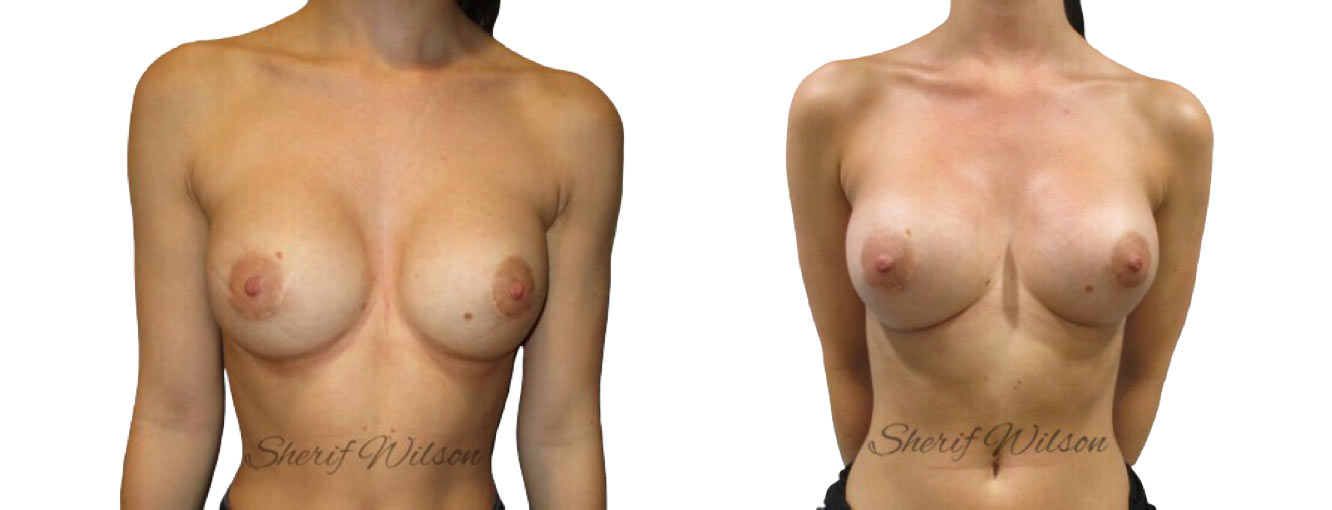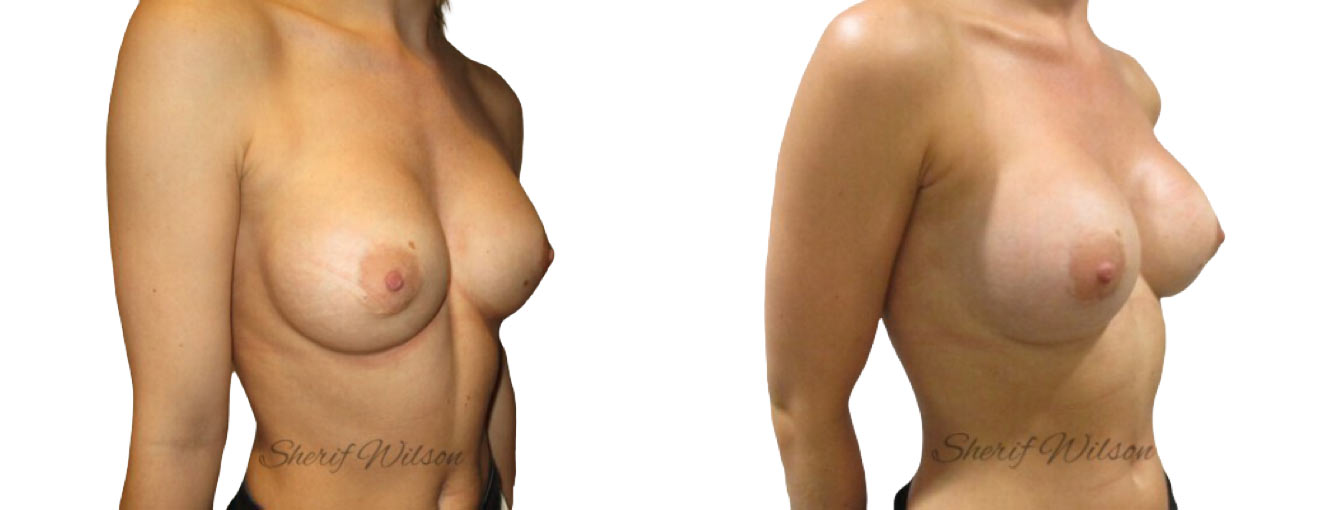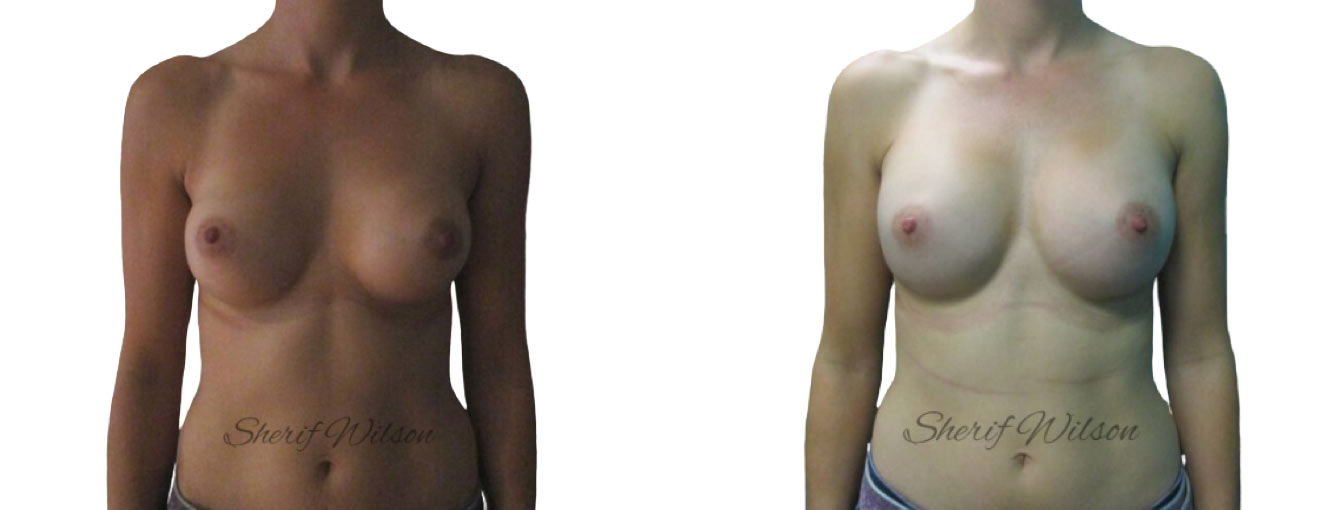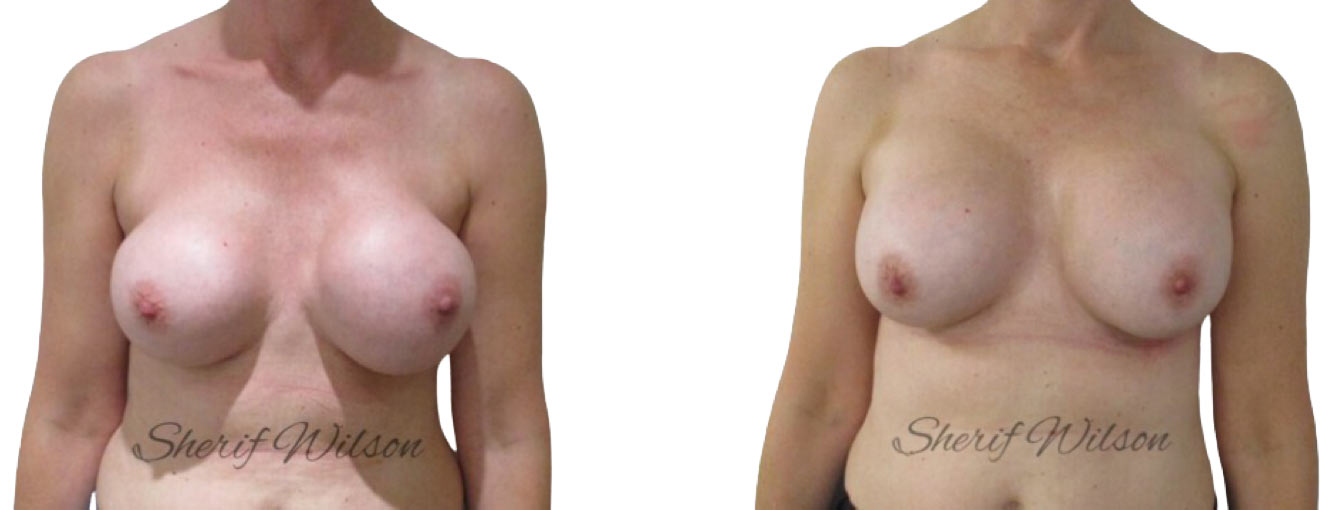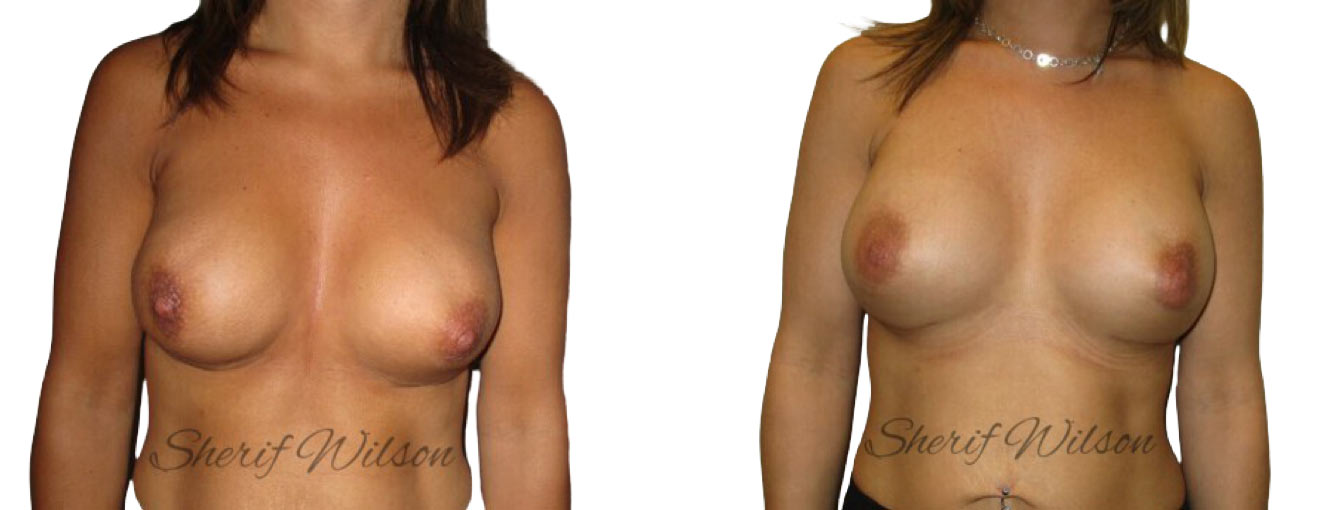Breast implant exchange (revision) surgery
Breast implant exchange is also known as breast augmentation revision surgery. It is simply the exchange of the breast implants, either for the same sized implant or for smaller/bigger ones, depending on the reasons for the exchange. This procedure can be done in combination with other surgical procedures, including a mastopexy (breast uplift).
We also provide breast implant removal (explant) surgery.
Deciding if breast implant exchange is right for you
Some of the most common reasons women choose to have their breast implants exchanged include:
- Dissatisfaction with breast appearance: Some women were never happy with the cosmetic outcome of their original breast augmentationprocedure. Others find that their breast appearance has changed over time due to aging, pregnancy or weight fluctuations.
- Interference with physical activity: Very large breasts can make it challenging to live an active, athletic lifestyle. If you have large implants, you made decide to reduce the size of these, rather than have them removed completely.
- Desire for a different sized implant: It can sometimes be difficult to envision how your new breasts will look before you undergo breast augmentation. If you feel that your initial implant was either too large or too small, you can exchange them for a size that is more appropriate for your frame.
- Implant complications: If you suffer a complication such as an implant rupture, hardening of the breasts (capsular contracture), muscle animation, double bubble appearance, or infection you may not want to have the implants removed completely, and therefore opt for an exchange. If you have had an implant infection, then you will have to wait 6 months between having the implants removed and having them re-inserted.
- Implant Shelf Life: The manufacturers life expectancy of breast implants is 10 or more years, although implants can stay in without problems for a much longer time however, they aren’t guaranteed to last a lifetime. Rather than have your implants removed you can decide to have an exchange for new implants.
